How Urban Expansion Triggers Spatio-Temporal Differentiation of Systemic Risk in Suburban Rural Areas: A Case Study of Tianjin, China
Abstract
:1. Introduction
2. Study Context and Data Sources
2.1. Research Scope
2.2. Data Sources
2.2.1. Acquisition of Land Use and Road Traffic Data
2.2.2. Acquisition of Socio-Economic Data
3. Methodology
3.1. Research Framework
3.2. Observed Variable
3.2.1. Observational Variables of the Impact of Urban Expansion on Suburban Rural Risk
3.2.2. Observational Variables of Rural Systemic Risk Factors in Suburbs
3.2.3. Observational Variables of Rural Risk Resilience in Suburban Areas
3.3. Methods of Spatial Econometric Analysis
3.3.1. Method of Calculating Spatial Information Statistics and the Spatial Change Rate Model
3.3.2. Correlation Analysis Method of Risk Factors Based on the Multiple Regression Model
3.3.3. Method of Risk Factor Correlation Analysis Based on the Random Forest Model
4. Results
4.1. Spatial and Temporal Differentiation of Urban Expansion to the Suburban Countryside
4.1.1. Changes in the Density of Suburban Transit Roads
4.1.2. Changes in Rural–Urban Accessibility
4.1.3. Temporal and Spatial Changes in Urban Land Embedding in the Suburban Countryside
4.2. Spatial Differentiation of Rural Systemic Risk under the Impact of Urban Expansion
4.2.1. Spatial Differentiation Characteristics of Systematic Risk Factors in the Suburban Countryside
4.2.2. Spatial Differentiation of Rural Risk Resistance in the Suburban Countryside
4.3. Correlation and Mechanism between Urban Expansion and Rural Risk Resistance
4.3.1. Correlation between the Density of Transit Roads and Rural Risk Resistance
4.3.2. The Correlation between Urban Employment Attraction and Rural Risk Resistance
4.3.3. Correlation between Urban Construction Land Embeddedness and Rural Risk Resistance
4.4. Screening and Mechanism of the Core Factors of Urban Expansion and Rural Systemic Risk
4.4.1. Screening and Mechanism of Correlation Factors between Transit Road Density and Rural Systemic Risk
- (1)
- Screening and mechanism analysis of influential correlation factors
- (2)
- Screening and mechanism analysis of core correlation factors
4.4.2. Correlation and Mechanism of Urban Employment Service Attraction and Rural Systemic Risk
4.4.3. Correlation and Mechanism between Urban Construction Land Embedding and Rural Systemic Risk Factors
5. Discussion
5.1. The Influence Mechanism of Urban Expansion on the Risk Resistance of Suburban Countryside
5.2. Influence Mechanism of Urban Expansion on the Suburban Rural Systemic Risk Factors
6. Conclusions
Author Contributions
Funding
Conflicts of Interest
References
- Mudau, L.S.; Mukhola, M.S.; Hunter, P.R. Systematic risk management approach of household drinking water from the source to point of use. J. Water Sanit. Hyg. Dev. 2017, 7, v2017029. [Google Scholar] [CrossRef] [Green Version]
- Zhu, F.K.; Zhang, F.R.; Ke, X.L. Rural industrial restructuring in China’s metropolitan suburbs: Evidence from the land use transition of rural enterprises in suburban Beijing. Land Use Policy 2018, 74, 121–129. [Google Scholar] [CrossRef]
- Tian, J.; Huang, J.; Zeng, S. Research on the Reconstruction of Ecological Security Pattern in Urban Fringe Based on the Compound Ecological Balance: A Case Study of Donghu District in Tongling City. Chin. Landsc. Archit. 2019, 34, 2244–2256. [Google Scholar]
- Zhao, P.; Wan, J. Land use and travel burden of residents in urban fringe and rural areas: An evaluation of urban-rural integration initiatives in Beijing. Land Use Policy 2021, 103, 105309. [Google Scholar] [CrossRef]
- Zeng, S.; Tian, J.; Zeng, J.; Lv, Y. Risk Prevention and Planning Response in the Urban-rural Fringe Based on the Requirements of New Urban. Planners 2021, 37, 5–11. [Google Scholar]
- Karimyan, K.; Alimohammadi, M.; Maleki, A.; Yunesian, M.; Nodehi, R.N.; Foroushani, A.R. Human health and ecological risk assessment of heavy metal(loid)s in agricultural soils of rural areas: A case study in Kurdistan Province, Iran. J. Environ. Health Sci. Eng. 2020, 18, 469–481. [Google Scholar] [CrossRef] [PubMed]
- Wei, J.; Zhang, N.; Cheng, Q.; Wu, S.; Liu, Z. Simulation and evaluation of the spatial heterogeneity of shallow-groundwater environmental risk in an urban–rural fringe of megacity: A case study of Shenyang city, northeast China. Environ. Earth Sci. 2020, 79, 250. [Google Scholar]
- Yin, G.; Jiang, X.; Sun, J.; Qiu, M. Discussing the regional-scale arable land use intensity and environmental risk triggered by the micro-scale rural households’ differentiation based on step-by-step evaluation—A case study of Shandong Province, China. Environ. Sci. Pollut. R 2020, 27, 8271–8284. [Google Scholar] [CrossRef]
- Ma, W.; Jiang, G.; Zhang, R.; Li, Y.; Jiang, X. Achieving rural spatial restructuring in China: A suitable framework to understand how structural transitions in rural residential land differ across peri-urban interface? Land Use Policy Int. J. Cover. All Asp. Land Use 2018, 75, 583–593. [Google Scholar] [CrossRef]
- Silo, N.; Serome, S. Resilience and Coping Strategies Against Socio-Ecological Risks: A Case of Livelihoods in a Botswana Rural Community; Department of Rural Development, Brandon University: Brandon, MB, Canada, 2018. [Google Scholar]
- Astuti, M.F.K.; Handayani, W. Livelihood vulnerability in Tambak Lorok, Semarang: An assessment of mixed rural-urban neighborhood. Rev. Reg. Res. Jahrb. Fur Reg. 2020, 40, 137–157. [Google Scholar] [CrossRef]
- Zhonglei, Y.U.; Yang, X.; Yang, T. Exploring conditions, determinants and mechanisms of rural households’ adaptability to tourism development: A case study of Jinsixia in Qinling Mountains. Acta Geogr. Sin. 2013, 68, 1143–1156. [Google Scholar]
- Rajesh, S.; Jain, S.; Sharma, P. Inherent vulnerability assessment of rural households based on socio-economic indicators using categorical principal component analysis: A case study of Kimsar region, Uttarakhand. Ecol. Indic. Integr. Monit. Assess. Manag. 2018, 85, 93–104. [Google Scholar] [CrossRef]
- Boiko, V. Diversification of business activity in rural areas as a risk minimization tool of economic security. Manag. Theory Stud. Rural. Bus. Infrastruct. Dev. 2017, 39, 19–32. [Google Scholar] [CrossRef] [Green Version]
- Wang, C.; He, Y. Spatio-temporal differentiation and differentiated regulation of the vulnerability of rural production space system in Chongqing. Acta Geogr. Sin. 2020, 75, 1680–1698. [Google Scholar]
- Zeng, S.; Jian, T.; Jian, Z. On Approaches to The Construction of Global City Area in The Context Of Beijing, Tianjin and Hebei Collaborative Development. Urbanism and Architecture 2017, 12, 33–36. [Google Scholar]
- Tian, J.; Zeng, S. Systematic Risk Assessment and Resilient Pattern Reconstruction of Rural Industry in Urban Fringe Areas: A Case Study on the Western Suburbs of Tianjin City. City Plan. Rev. 2021, 45, 19–30. [Google Scholar]
- An, T.N.; Le Truc, N.; Hanh, H.N.; Hanh, V.T.; Hong, V.N.; Tuan, A.P.; Bich, T.N.; Thao, T.P.; Nhan, T.T.T.; Hens, L. Rural livelihood diversification of Dzao farmers in response to unpredictable risks associated with agriculture in Vietnamese Northern Mountains today. Environ. Dev. Sustain. 2020, 22, 5387–5407. [Google Scholar] [CrossRef]
- Sujakhu, N.M.; Ranjitkar, S.; He, J.; Schmidt-Vogt, D.; Su, Y.; Xu, J. Assessing the Livelihood Vulnerability of Rural Indigenous Households to Climate Changes in Central Nepal, Himalaya. Sustainability 2019, 11, 2977. [Google Scholar] [CrossRef] [Green Version]
- Alam, G.M.M. Livelihood Cycle and Vulnerability of Rural Households to Climate Change and Hazards in Bangladesh. Environ. Manag. 2017, 59, 777–791. [Google Scholar] [CrossRef] [PubMed]
- Ofoegbu, C.; Chirwa, P.; Francis, J.; Babalola, F. Assessing vulnerability of rural communities to climate change. Int. J. Clim. Chang. Strateg. Manag. 2017, 9, 374–386. [Google Scholar] [CrossRef]
- Malicki, Z.; Bruno, B.; Elisée, G.; Blaise, S. Mathematical modelling of the dynamics of the socio-economic vulnerability of rural Sahelian households in a context of climatic variability. Model. Earth Syst. Environ. 2018, 4, 1213–1223. [Google Scholar]
- Patton, M.; Xia, W.; Feng, S.; Hewitt, V. Economic structure and vulnerability to recession in rural areas. EuroChoices 2016, 15, 47–53. [Google Scholar] [CrossRef]
- Zhevora, Y.I.; Zhukova, V.A.; Molchanenko, S.A.; Rezenkov, D.N.; Skrebtsova, T.V. Economic and mathematical modeling of personnel risks in the rural labor market. Res. J. Pharm. Biol. Chem. Sci. 2018, 9, 824–829. [Google Scholar]
- Tang, X.Y.; Yang, Y.; Tam, F.Y.; Tao, R.; Dai, Y.N. Pesticides in three rural rivers in Guangzhou, China: Spatiotemporal distribution and ecological risk. Environ. Sci. Pollut. Res. 2019, 26, 3569–3577. [Google Scholar] [CrossRef]
- Rolfe, M.I.; Pit, S.W.; McKenzie, J.W.; Longman, J.; Matthews, V.; Bailie, R.; Morgan, G.G. Social vulnerability in a high-risk flood-affected rural region of NSW, Australia. Nat. Hazards 2020, 101, 631–650. [Google Scholar] [CrossRef]
- Li, Z.; Yang, G.F.; Liu, J.P.; University, S.A. The Dynamic Changes and Hot Spots of Land Use in Fushun City from 1986 to 2012. Sci. Geogr. Sin. 2014, 34, 185–191. [Google Scholar]
- Hidalgo, D.M.; Nunn, P.D.; Beazley, H. Uncovering multilayered vulnerability and resilience in rural villages in the Pacific: A case study of Ono Island, Fiji. Ecol.Soc. 2021, 26. [Google Scholar] [CrossRef]
- Min, L. Eco-Vulnerability Assessment of Scenic Fringe Rural Tourism Sites Based on Rmp Environmental Assessment Model. J. Environ. Prot. Ecol. 2019, 20, 1733–1744. [Google Scholar]
- Chen, T.L.; Cheng, H.W. Applying traditional knowledge to resilience in coastal rural villages. Int. J. Disaster RiskReduct. 2020, 47, 101564. [Google Scholar] [CrossRef]
- Sim, T.; Han, Z.Q.; Guo, C.L.; Lau, J.; Yu, J.; Su, G. Disaster preparedness, perceived community resilience, and place of rural villages in northwest China. Nat. Hazards 2021, 108, 907–923. [Google Scholar] [CrossRef]
- Zhang, W.; Dong, W. Advanced Tutorial on SPSS Statistical Analysis, 3rd ed.; Higher Education Press: Beijing, China, 2018; pp. 116–119. [Google Scholar]
- Below, T.B.; Mutabazi, K.D.; Kirschke, D.; Franke, C.; Sieber, S.; Siebert, R.; Tscherning, K. Can farmers’ adaptation to climate change be explained by socio-economic household-level variables? Glob. Environ. Chang. 2012, 22, 223–235. [Google Scholar] [CrossRef]
- Mandal, K.; Saha, S.; Mandal, S. Applying deep learning and benchmark machine learning algorithms for landslide susceptibility modelling in Rorachu river basin of Sikkim Himalaya, India. Geosci. Front. 2021, 12, 101203. [Google Scholar] [CrossRef]
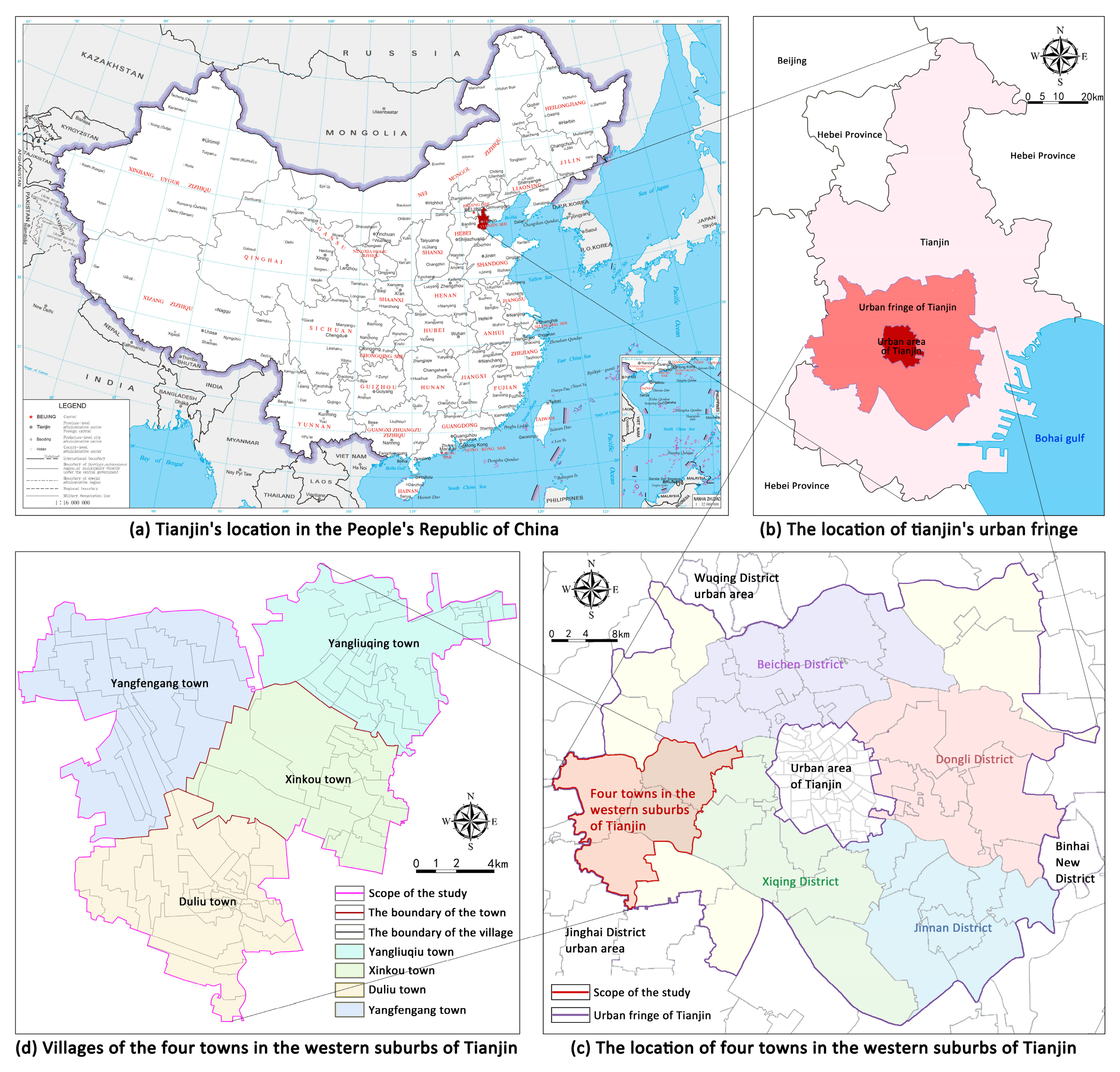

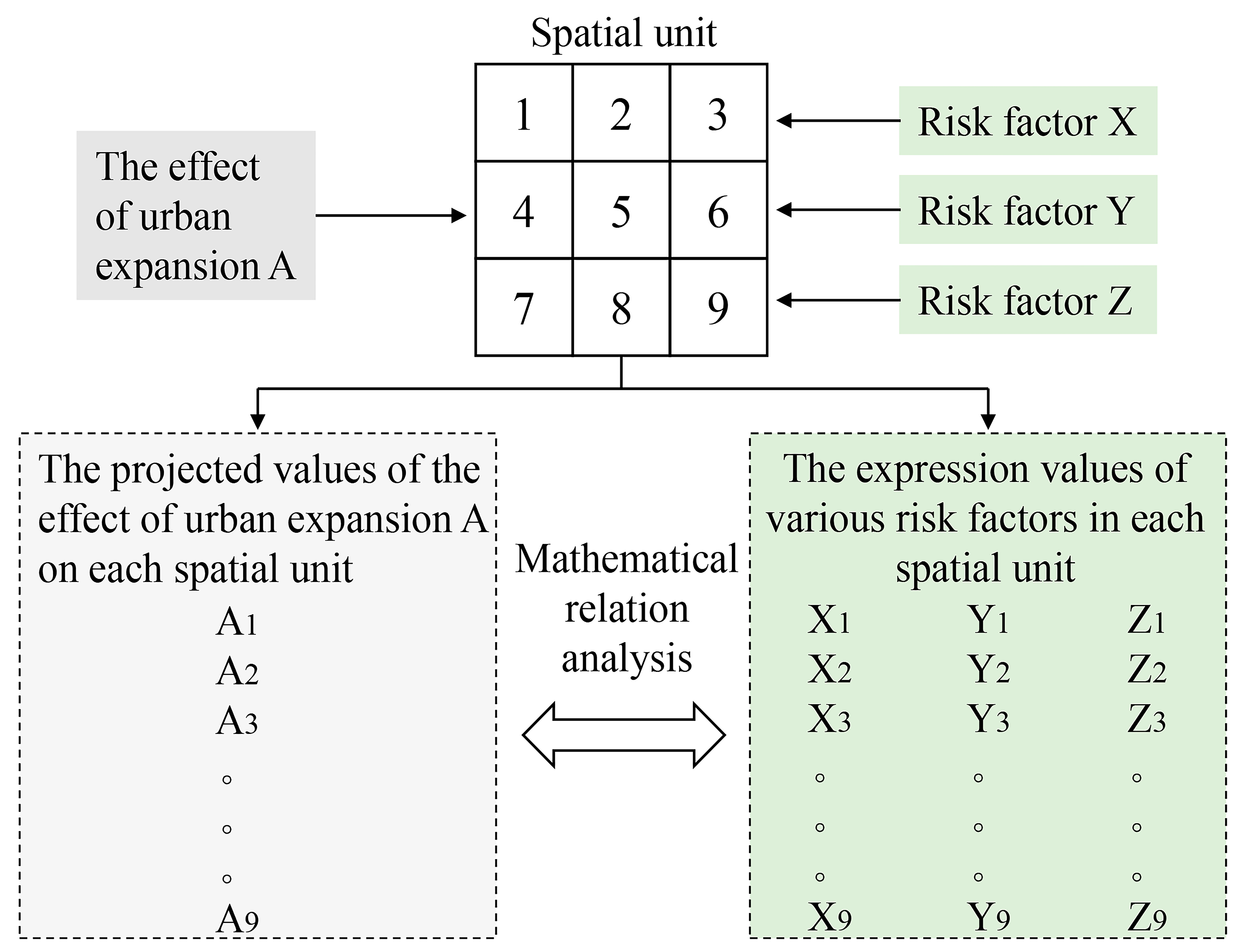



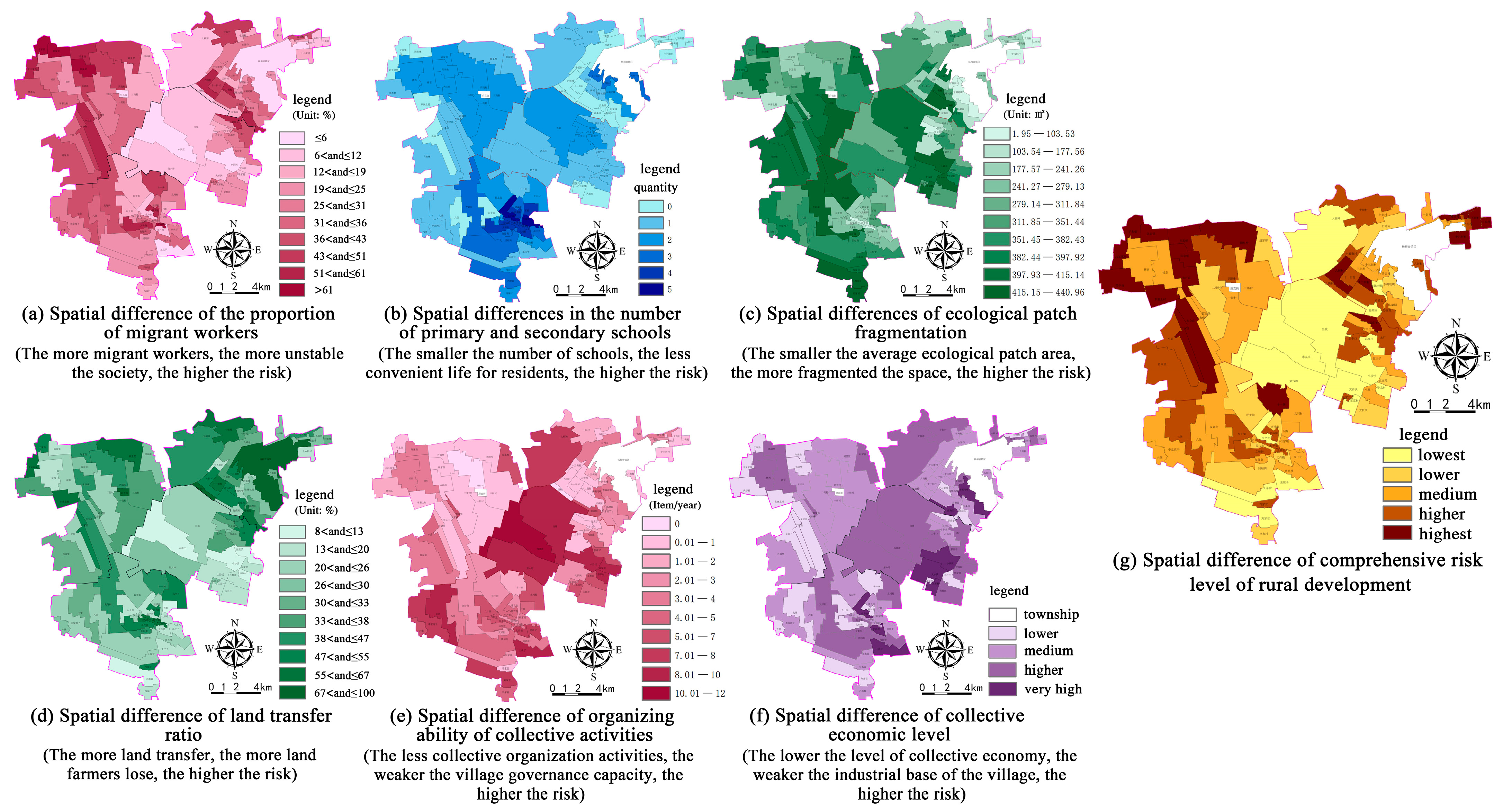


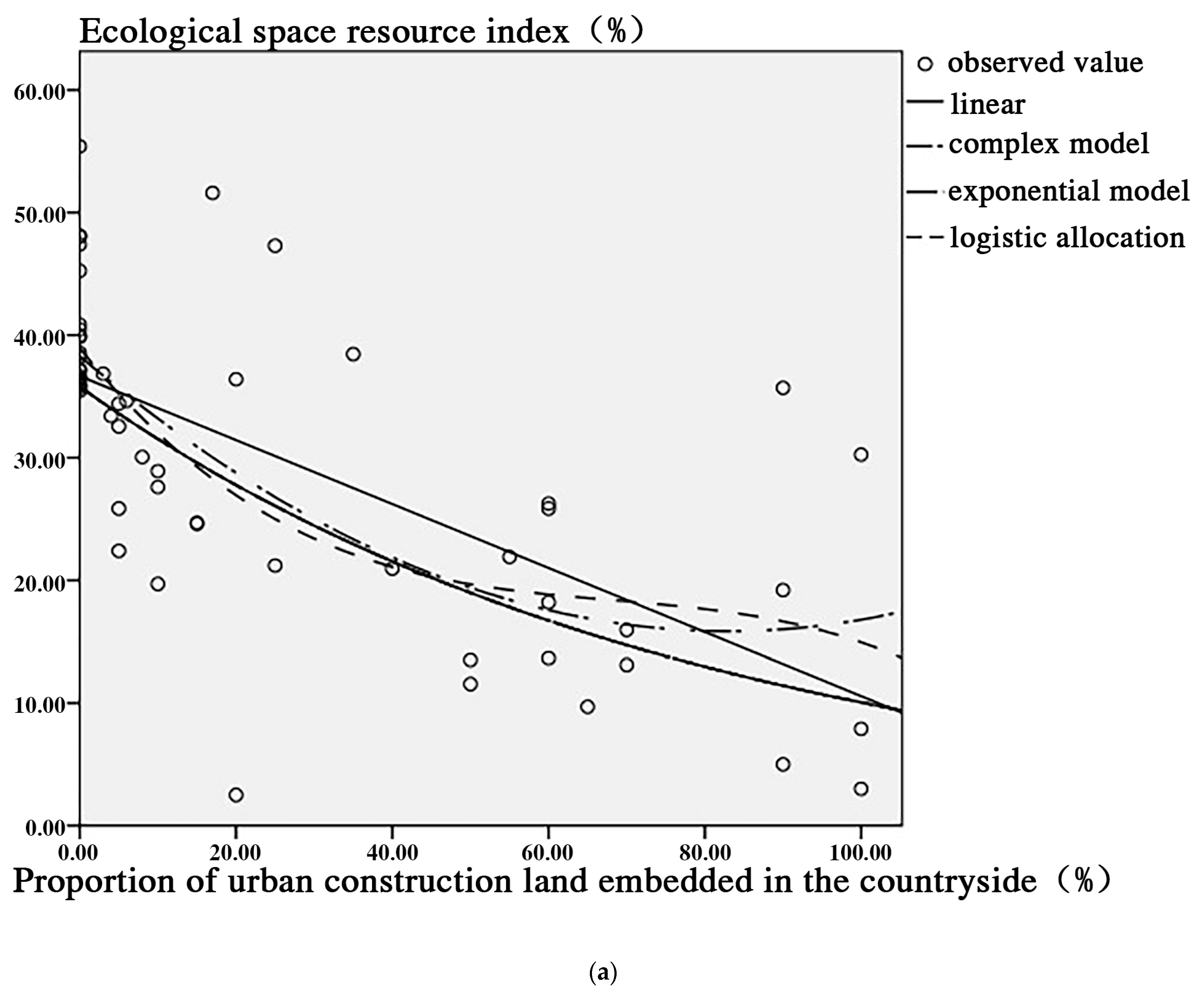
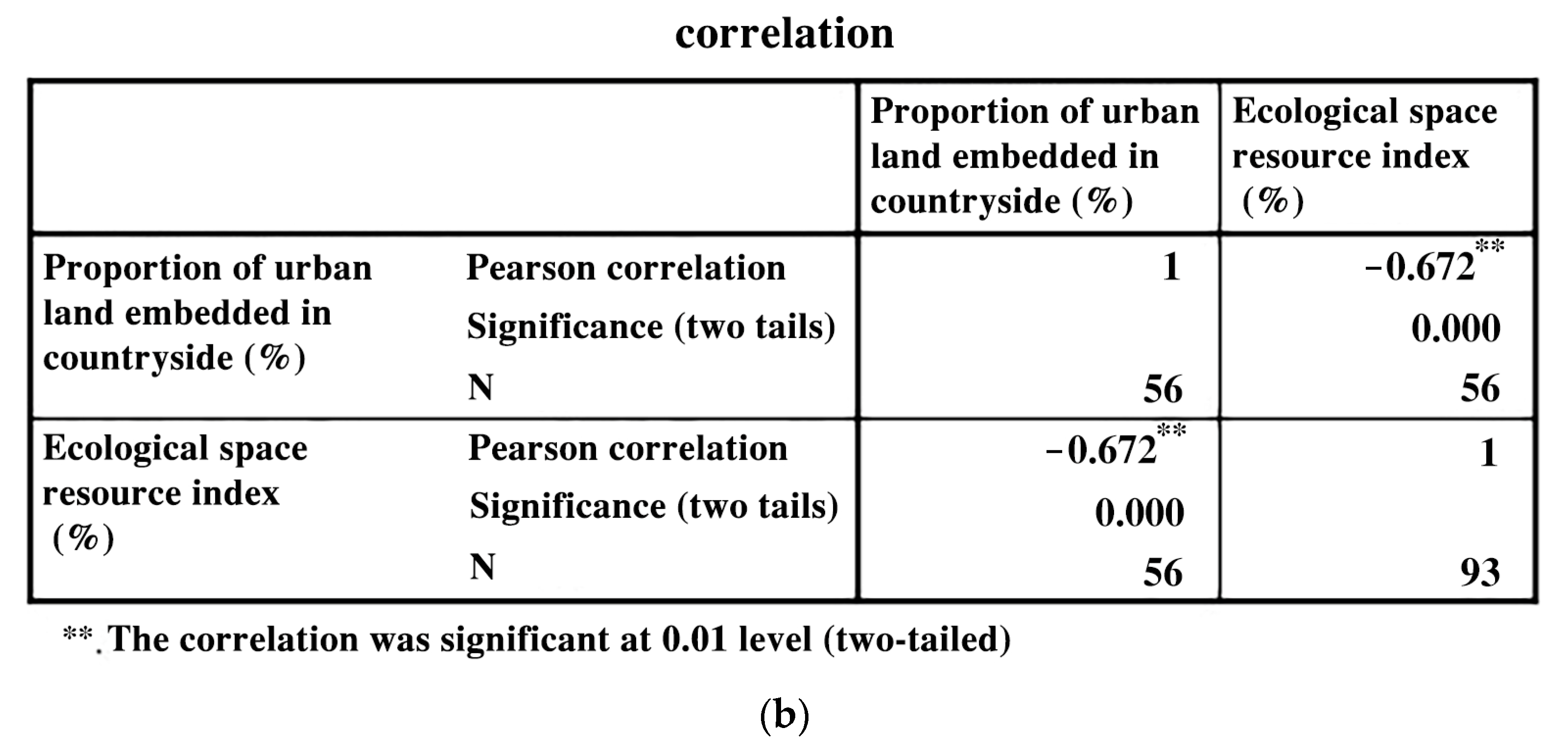
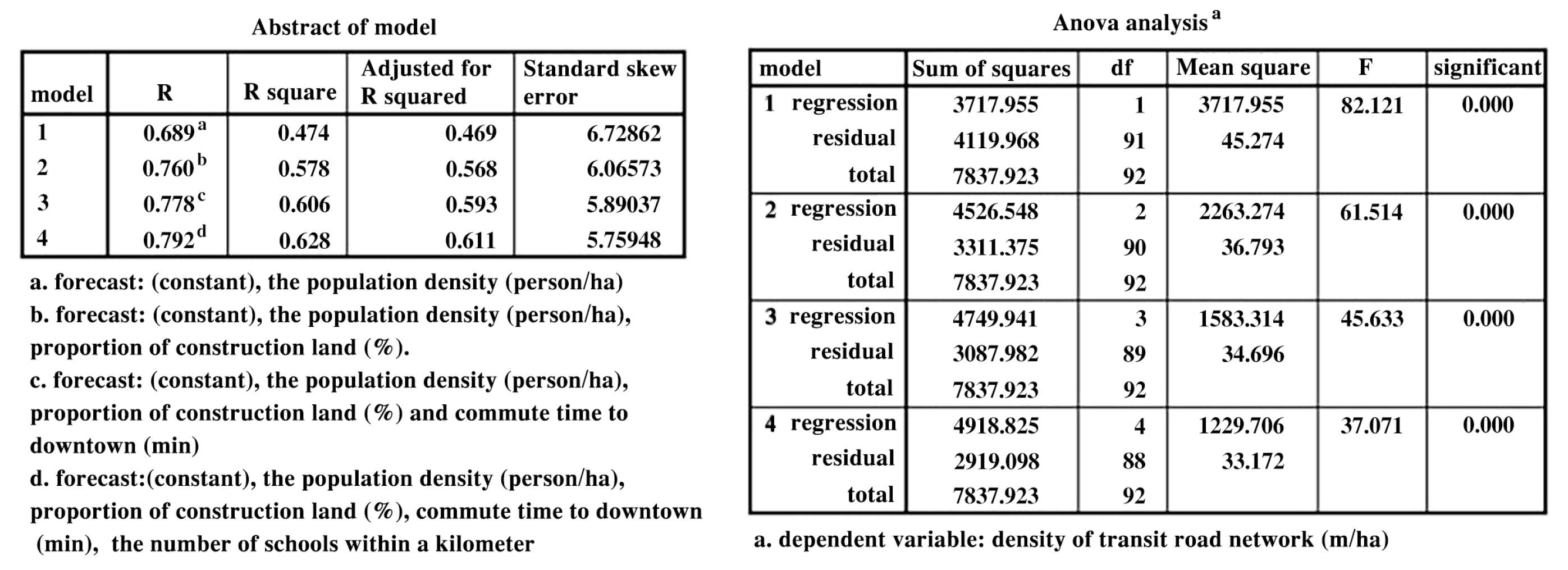
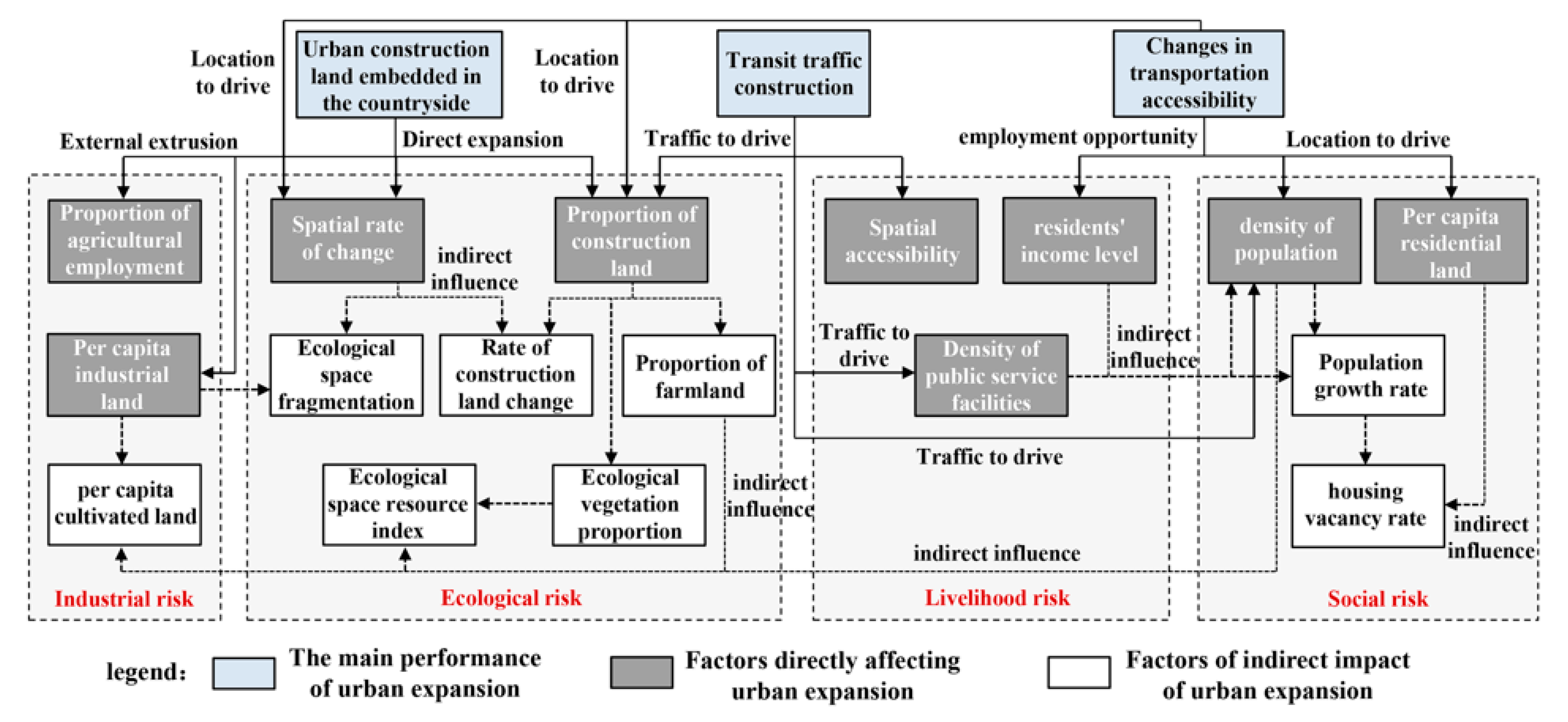
| Data | Utility | Data Source |
|---|---|---|
| Land use data | Spatial stability, ecological resource richness, proportion, and change in construction land can be calculated, and rural ecological risks can be analyzed. | Landsat 7 and Landsat 8 remote sensing images, which can be downloaded through a geospatial data cloud platform and interpreted through ENVI |
| Boundary data of administrative villages | It can support the study of spatial differentiation with the village as a unit. | Database of Bazhou City Planning Bureau and Tianjin Urban Planning and Design Institute |
| Road data | It can be used to calculate traffic accessibility, external traffic road density, etc., and analyze the degree of influence of urban expansion. | Omnipotent electronic map download software |
| Socio-economic data | It includes data on population, industry, employment, land transfer, income, collective economy, public service facilities, etc., which can be used to analyze the risks to the rural industry, society, and people’s livelihood. | Questionnaire surveys, interview records, and Internet data search (http://www.tcmap.com.cn/tianjin/xiqingqu.html, accessed on 9 November 2019) |
| Latent Variable | Observational Variable | Risk Characterization |
|---|---|---|
| The sustainable development level of the rural industry | The proportion of agricultural employees [22] | Too high or too low |
| The proportion of land transfer [2,17] | Not suitable for farming needs | |
| Arable land per capita [8] | Too little | |
| Main types of non-agricultural industries [12,17] | Low end | |
| Main types of farming [17] | Low economic benefit | |
| The development level of collective and private economy [17] | Low | |
| The per capita area of industrial land [15] | Too large | |
| The stable level of the rural social structure | The spillover ratio of labor outflow [23] | High |
| The magnitude of population change [17,24] | Rapid | |
| The density of the population [13,26] | Low | |
| Housing vacancy rate [12] | High | |
| The frequency of group activities organized [17] | Low | |
| The percentage of support group coverage [17] | Low | |
| The level of prosperity and facilities in the countryside | Employment diversity index [24] | A single type of employment |
| The number of primary and secondary schools within 1 km [17,22] | Insufficient | |
| The number of health facilities within 1 km [17] | Insufficient | |
| The number of bus stops within 1 km [17,22] | Insufficient | |
| Commuting time to and from the city [15,24] | Long | |
| Average annual household income [11,12] | Low | |
| Rural ecological pattern stability and resource richness | The average area of the ecological patch [25] | Plaque too fragile |
| The percentage of ecological vegetation coverage [3,27] | Low | |
| The percentage of water area coverage [3,17] | Low | |
| The percentage of farmland coverage [8] | Low | |
| The rate of overall spatial change [27] | Rapid | |
| Ecological space resource index [17,28] | Less ecological resources |
| The Dimension of Ability to Resist Risk | The Subdivision Dimension of Risk Resistance | Resilience Targets against Risk | Primary Observed Variable |
|---|---|---|---|
| System functionality | The abundance of the villagers’ lives | Good economic performance of peasant households | Annual household income [11,12] |
| The level of collective economy | Prosperous collective industries | The annual income of village collective [17,29] | |
| Job diversity | Strong livelihood security | Employment diversity index [24] | |
| System stability | The effectiveness of ensuring people’s well-being | Guaranteed public services | The number of facilities per kilometer radius [17,30] |
| The reasonableness of population composition | Stable social structure | The level of labor outflow [23] | |
| The stability of land use | Stable spatial structure | The rate of spatial change [27,31] | |
| System sustainability | The effectiveness of ecosystem services | Good function of the ecosystem | Ecological space resource index [17,28] |
| The integrity of the ecological security pattern | Secure ecological patterns | The average area of the ecological patch [25] |
| Variables of Rural Risk Factors | Pearson Correlation | Significance (Two Tails) |
|---|---|---|
| The proportion of agricultural employees | −0.363 | 0.000 |
| The proportion of land transfer | 0.202 | 0.052 |
| Arable land per capita | −0.139 | 0.184 |
| Main types of non-agricultural industries | —— | —— |
| Main types of farming | —— | —— |
| The development level of collective and private economy | —— | —— |
| The per capita area of industrial land | 0.001 | 0.995 |
| The spillover ratio of labor outflow | 0.032 | 0.760 |
| The magnitude of population change | 0.202 | 0.053 |
| The density of the population | 0.689 | 0.000 |
| Housing vacancy rate | −0.146 | 0.162 |
| Employment diversity index | −0.062 | 0.553 |
| The number of primary and secondary schools within 1 km | 0.359 | 0.000 |
| The number of health facilities within 1 km | 0.219 | 0.035 |
| Commuting time to and from the city | −0.432 | 0.000 |
| Average annual household income | 0.071 | 0.497 |
| The average area of the ecological patch | −0.649 | 0.000 |
| The percentage of ecological vegetation coverage | −0.249 | 0.016 |
| The percentage of water area coverage | −0.189 | 0.069 |
| The percentage of farmland coverage | −0.635 | 0.000 |
| The rate of overall spatial change | 0.137 | 0.189 |
| Ecological space resource index | −0.619 | 0.000 |
| Model | Non-Standardized Coefficient | Normalization Coefficient | T | Sig. | |
|---|---|---|---|---|---|
| B | Standard Error | Beta | |||
| (Constant) | 6.412 | 2.420 | 2.650 | 0.010 | |
| The density of the population (S2) | 0.345 | 0.076 | 0.399 | 4.544 | 0.000 |
| The proportion of construction land (S8) | 0.101 | 0.034 | 0.280 | 2.986 | 0.004 |
| Commuting time to and from the city (L5) | −0.241 | 0.078 | −0.237 | −3.088 | 0.003 |
| The number of primary and secondary schools within 1 km (L2) | 1.166 | 0.517 | 0.165 | 2.256 | 0.027 |
| Effective Correlation Factor | Connection Weights | Sequence |
|---|---|---|
| The average area of the ecological patch | 10.55 | 3 |
| The proportion of construction land | 13.02 | 2 |
| The percentage of farmland coverage | 9.96 | 4 |
| The percentage of ecological vegetation coverage | 1.52 | 8 |
| The density of the population | 8.72 | 5 |
| The proportion of agricultural employees | 2.47 | 7 |
| Commuting time to and from the city | 20.58 | 1 |
| The number of primary and secondary schools within 1 km | 2.96 | 6 |
| The number of health facilities within 1 km | 0.92 | 9 |
| Dimensions of Resilience to Risk | Functional Dimension | Stability Dimension | Sustainability Dimension | ||||||
|---|---|---|---|---|---|---|---|---|---|
| Urban Expansion | The Affluence of the Villagers | The Prosperity of Collective Industries | Diverse Employment Options | Ensuring People’s Well-Being | Reasonable Labor Composition | Stable Land Use | Ecological Service Guarantee | Ecological Security Pattern | |
| The density of transit roads | Non-significant | Non-significant | Non-significant | Non-significant | Negative significance | Highly negative significance | Highly negative significance | Highly negative significance | |
| The attraction of urban employment and services | Positive significance | Positive significance | Highly positive significance | Non-significant | Highly negative significance | Highly negative significance | Negative significance | Negative significance | |
| The embedding of urban construction land | Non-significant | Non-significant | Negative significance | Non-significant | Negative significance | Highly negative significance | Highly negative significance | Highly negative significance | |
Publisher’s Note: MDPI stays neutral with regard to jurisdictional claims in published maps and institutional affiliations. |
© 2022 by the authors. Licensee MDPI, Basel, Switzerland. This article is an open access article distributed under the terms and conditions of the Creative Commons Attribution (CC BY) license (https://creativecommons.org/licenses/by/4.0/).
Share and Cite
Tian, J.; Zeng, S.; Zeng, J.; Wang, S. How Urban Expansion Triggers Spatio-Temporal Differentiation of Systemic Risk in Suburban Rural Areas: A Case Study of Tianjin, China. Land 2022, 11, 1877. https://doi.org/10.3390/land11111877
Tian J, Zeng S, Zeng J, Wang S. How Urban Expansion Triggers Spatio-Temporal Differentiation of Systemic Risk in Suburban Rural Areas: A Case Study of Tianjin, China. Land. 2022; 11(11):1877. https://doi.org/10.3390/land11111877
Chicago/Turabian StyleTian, Jian, Suiping Zeng, Jian Zeng, and Sen Wang. 2022. "How Urban Expansion Triggers Spatio-Temporal Differentiation of Systemic Risk in Suburban Rural Areas: A Case Study of Tianjin, China" Land 11, no. 11: 1877. https://doi.org/10.3390/land11111877






